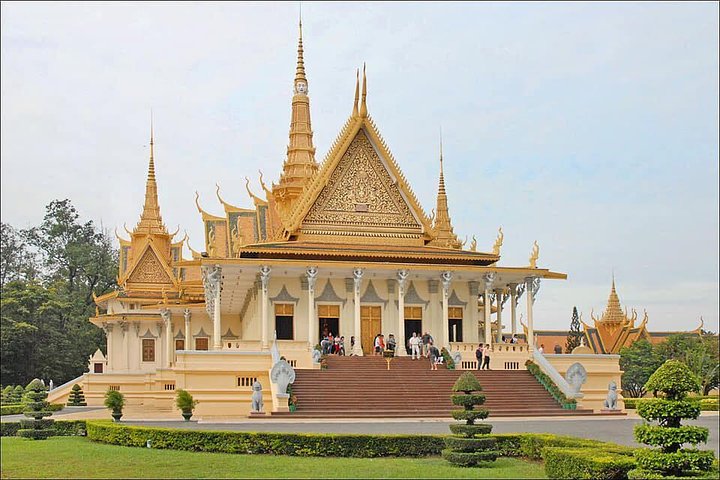Exploring Phnom Penh: A Journey Through History and Reflection
Eager to explore Cambodia’s capital, I embarked on a full-day tour of Phnom Penh, uncovering its vibrant culture and confronting its tragic history. From the grandeur of the Royal Palace to the sobering Killing Fields, this journey was both enlightening and humbling.
A Royal Start to the Day
Arriving in Phnom Penh, I was eager to dive into the heart of Cambodia’s capital. The day began with a visit to the Royal Palace, a majestic complex that stands proudly in the city center. As I wandered through the grounds, the Silver Pagoda caught my eye with its shimmering floor made of solid silver tiles. The grandeur of the palace was a stark contrast to the bustling streets outside, offering a serene start to the day.
Next, I made my way to the National Museum, housed in a beautiful old building. The museum was a treasure trove of art and artifacts from Cambodia’s pre-Angkorian era. Each piece told a story of the country’s rich history, and I found myself lost in the tales of the past. It was a perfect way to set the tone for the rest of the day’s exploration.
A Taste of Local Life
After soaking in the history, I headed to a local market that was unlike any I’d seen before. Built under a large dome, the market had an almost mosque-like appearance. Inside, the vibrant stalls were filled with souvenirs, local handicrafts, and electronic goods. I couldn’t resist testing my bargaining skills, a fun challenge that added to the experience.
Lunchtime brought me to a charming riverside café, where I indulged in a delicious Cambodian meal. The flavors were rich and satisfying, a delightful break before the afternoon’s more somber visits. Sharing the meal with fellow travelers, we exchanged stories and tips, a reminder of the camaraderie that often forms on the road.
Reflecting on a Tragic Past
The afternoon took a more reflective turn as I visited the Tuol Sleng Genocide Museum, also known as Security Prison 21 (S-21). Walking through the former prison, I was confronted with the harrowing history of the Khmer Rouge regime. The exhibits were a sobering reminder of the atrocities committed, and I felt a deep sense of respect for the resilience of the Cambodian people.
The journey continued to the Killing Fields at Choeung Ek, located 15 kilometers outside the city. Here, the reality of the past was palpable, with memorials honoring the victims of the regime. It was a difficult but essential part of understanding Cambodia’s history, and I left with a heavy heart but a greater appreciation for the country’s journey towards healing.
Throughout the day, my guide and driver were exceptional, providing insights and support that enriched the experience. Their professionalism and knowledge made the tour not only informative but also deeply personal. It was a day that left a lasting impression, one that I would recommend to anyone seeking to understand the complexities of Cambodia’s past and present.













































